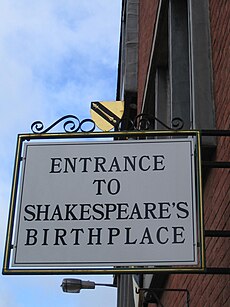Learning in a digital age/LiDA103/Copyright case study/Question 1
From WikiEducator
Jump to: navigation, search
Case study
Completing a digital assignment on Shakespeare's Hamlet
- The full text of Hamlet edited by Charles Kean who died in 1868.
- An image of the portrait of Hamlet, by William Morris Hunt (1824 - 1879) housed by the Boston Museum of Fine Arts.
- A digital copy of the Cobbe portrait of William Shakespeare recently discovered in March 2009. (See press release published by The Guardian.)
- A local copy of the BLC production of Hamlet from Youtube.
- Theresa has compiled a slide show with an audio summary which she will host on Slideshare. Her slide show was based on her own original research work drawing on a winning essay published by Penguin on the Signet Essay Competition site, openly accessible on the web.
Question 1: Shakespeare's Hamlet edited by Charles Kean
Who owns the copyright of the Kean's edition of Hamlet?
- Fill in blanks. Use your cursor or "tab" key to advance to the next answer. On a mobile phone, tap the text field to type answer and tap anywhere on the screen to check your answers.
- This edited version of Hamlet by Charles Kean is a literary work.
- Literary works are protected by copyright.
- The copyright of this edited work would ordinarily belong to the publisher.
- However, in this instance, the copyright has expired and this work has entered the public domain.
- In most countries, the term for the copyright of individuals extends for the life of the author plus a minimum of 50 years or in the case of the United States of America and the European Union Member States, the author's lifetime plus 70 years.
- Note that the original verbatim text of Hamlet by William Shakespeare is in the public domain. Copyright protects the expression of ideas, which means that the layout and style of newer editions of Hamlet may still be under copyright.
Permissions to reuse the Kean's edition of Hamlet
- Can Theresa upload a verbatim copy of the full text of Hamlet edited by Keans on the website?
- Yes
- Correct. As the copyright of this work has expired and is in the public domain, Theresa can include the full text without restriction.
- No
- Incorrect. As this work is in the public domain, there are no restrictions on making a full copy of the text.
- Yes
- Should Theresa reference or attribute Charles Kean in her course materials.
- Yes
- Recommended. Ethical practice would suggest that Theresa should attribute her source. However, the legal position is not clear cut. The attribution requirement stems from moral rights and attribution is not necessarily a legal requirement of the public domain. The duration of moral rights is unclear. Some say that moral rights expire on the death of the author, others argue that they continue as long as the copyright holds and a few suggest that moral rights should hold indefinitely.
- No
- Not recommended. While there is no legal attribution requirement for works released in the public domain from a copyright perspective, it is important to note that the works cannot legally be removed from the public domain by asserting copyright ownership of these works after they have entered the public domain. This could be considered copyright fraud.
- Yes
